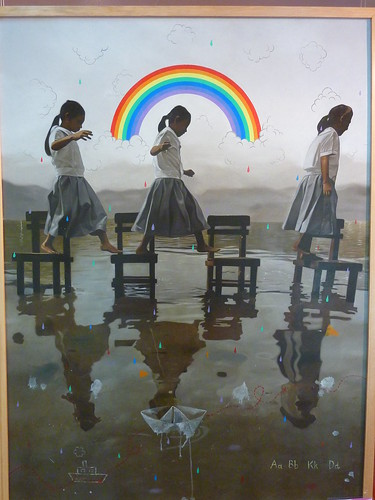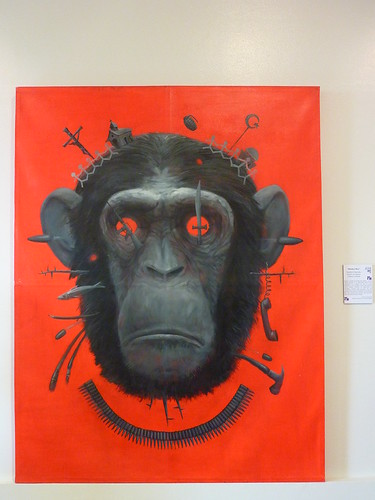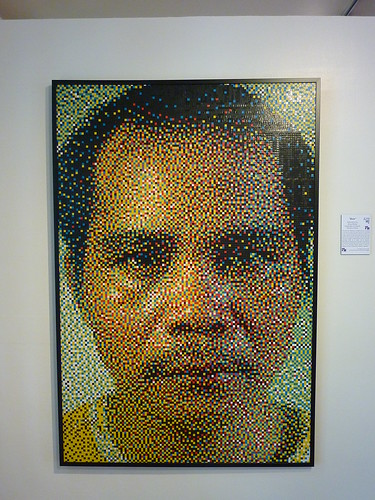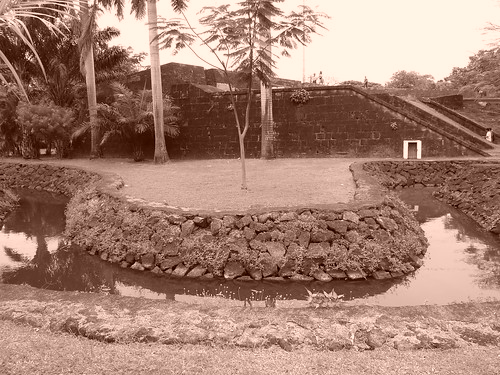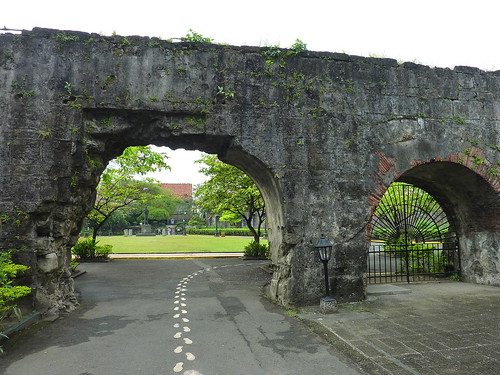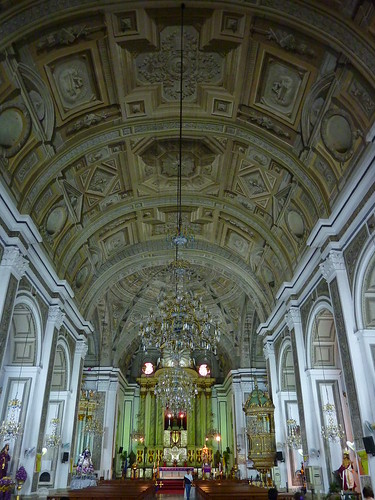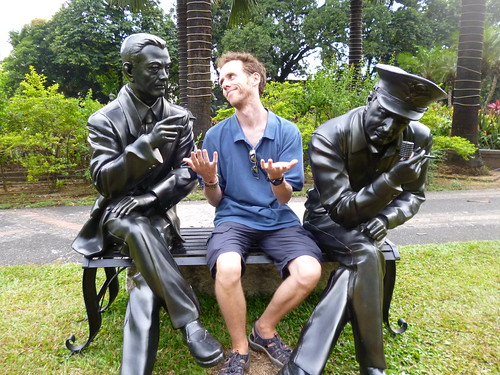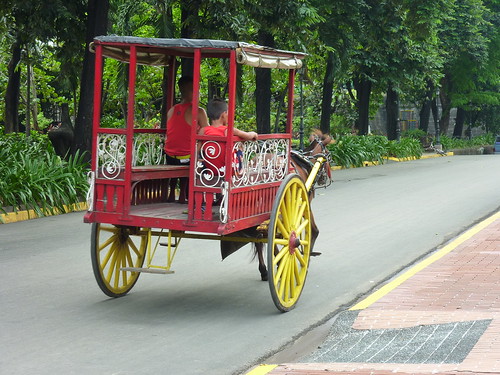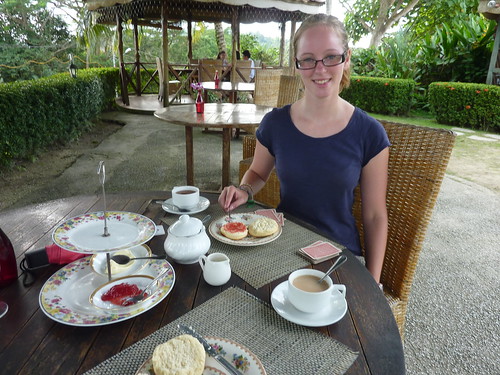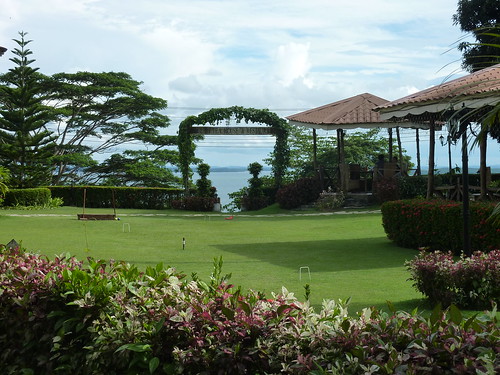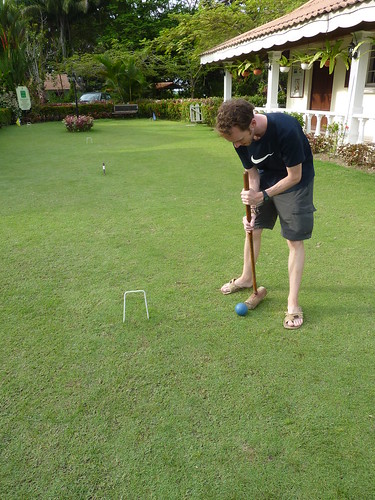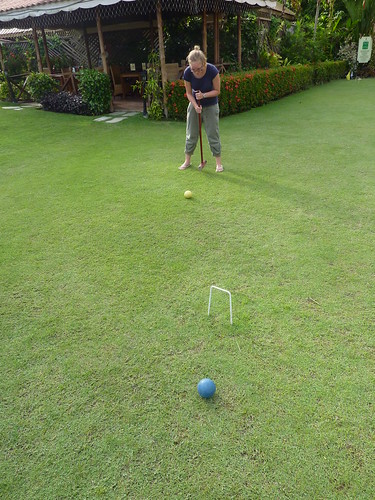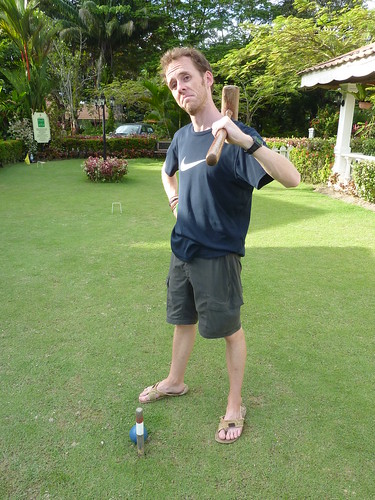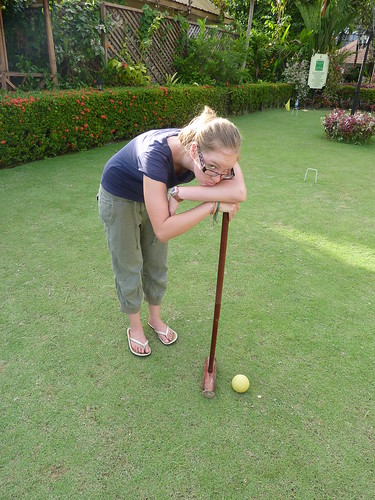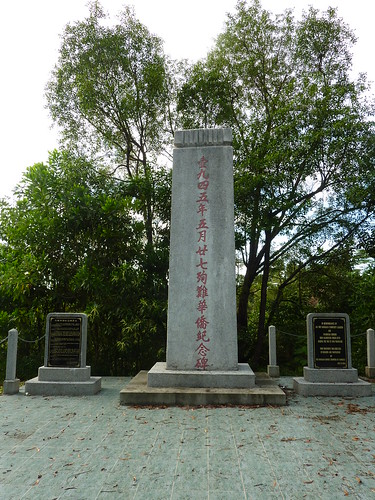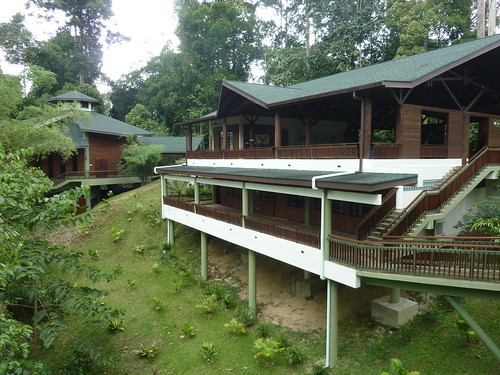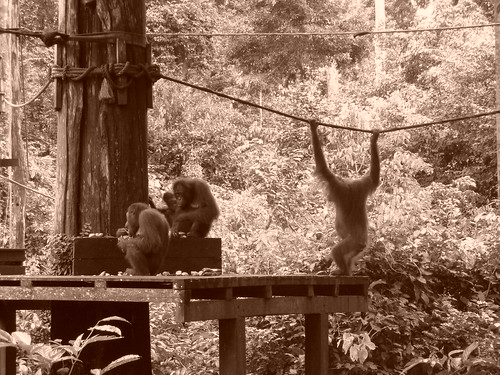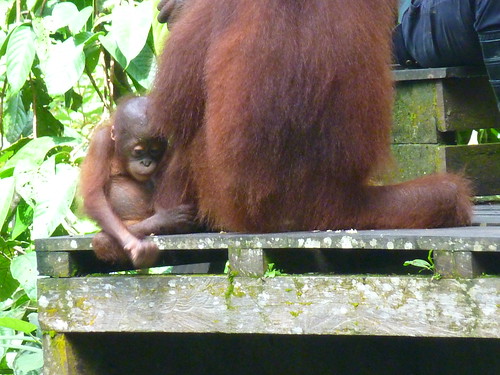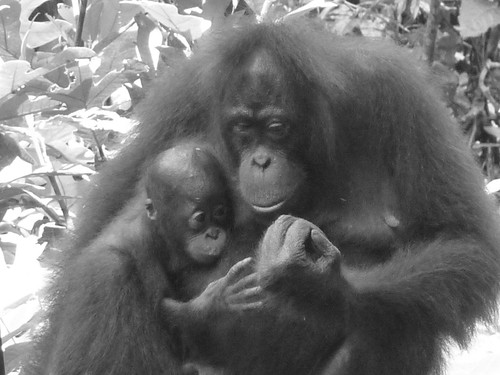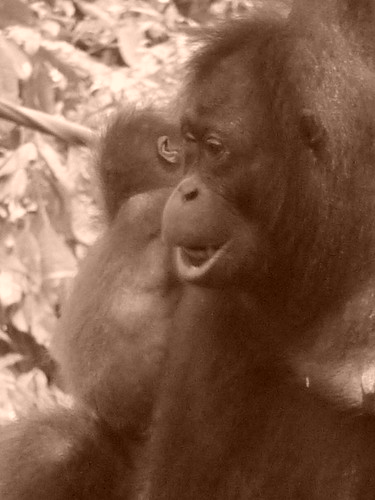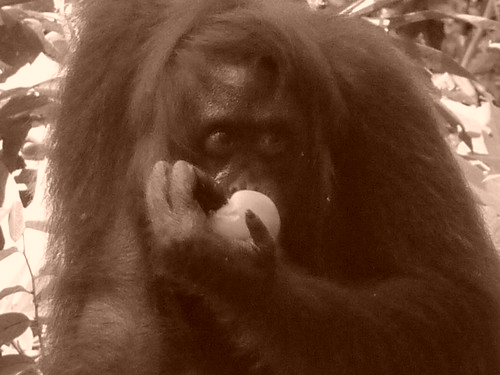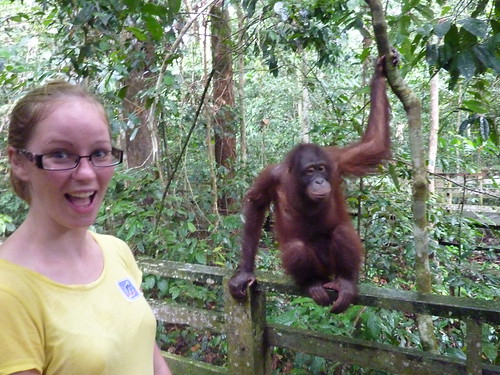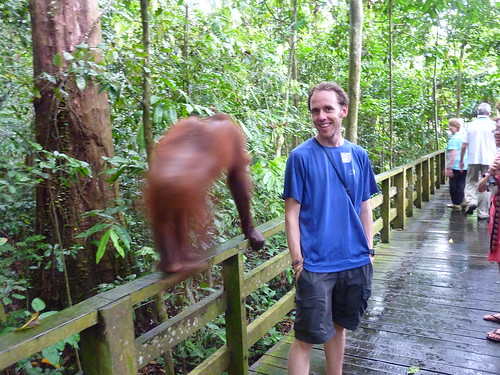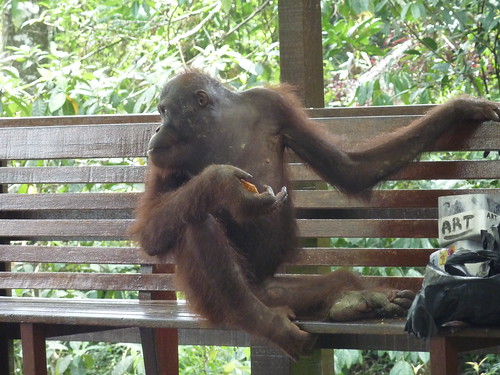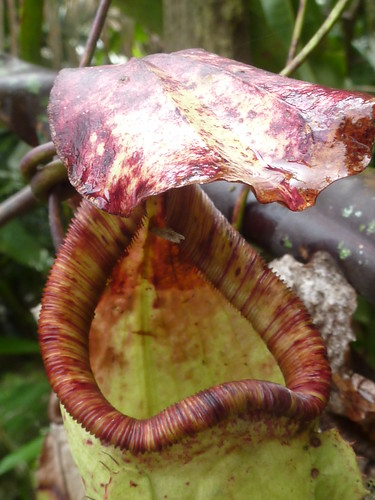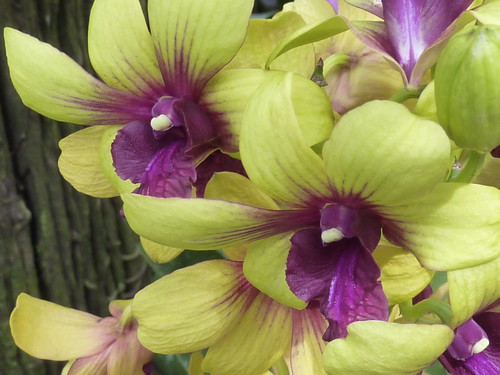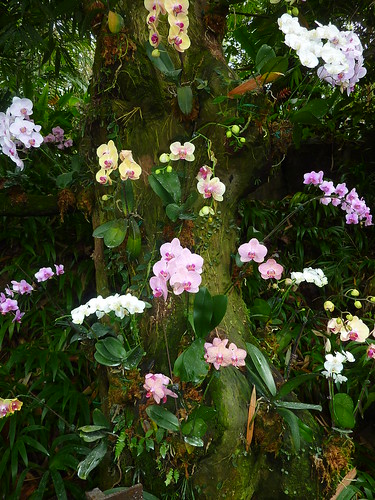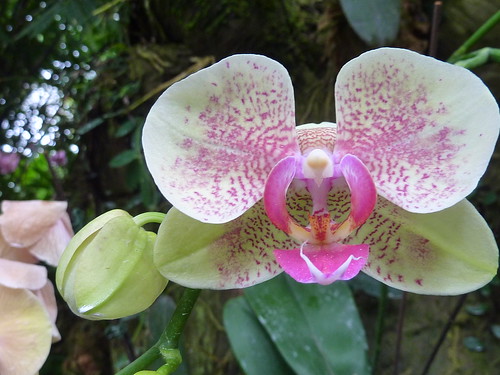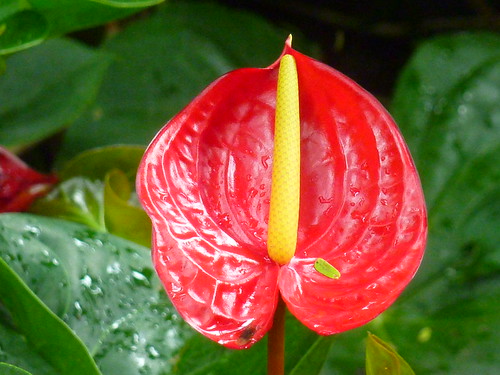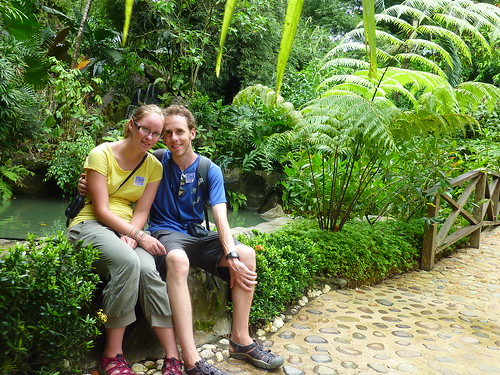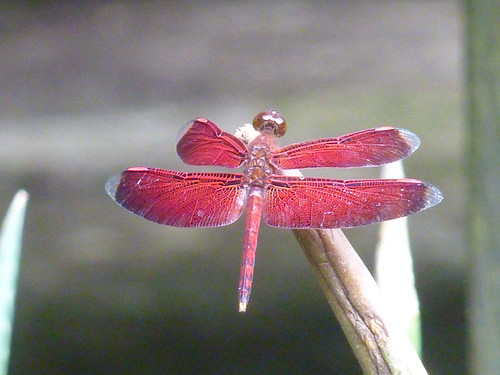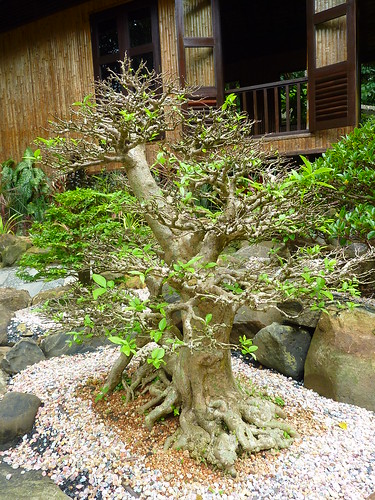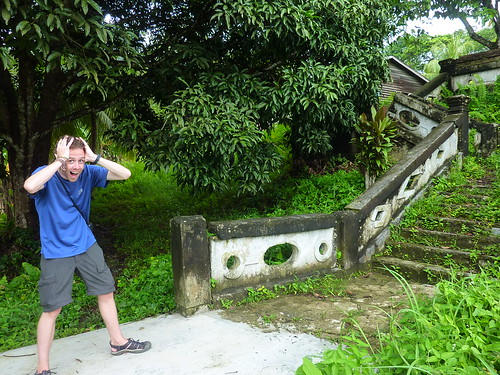Getting to the port, we were set upon by ferrymen wanting to take us across to Malapascua. We’d heard the crossing was pretty cheap, but they immediately started the pricing at 500 pesos (£7.50) per person. There were only 4 travellers: us and a German couple, and they used that as the excuse for the price. We told them we would wait a bit and see if anyone else turned up, and they immediately dropped the price to 200 pesos each. It was hot and bright (fortunately Gilly had bought her 4th pair of sunglasses in Manila after weeks of searching for the "right pair"), there was little shelter, so we bit the bullet and went with them. The ride took 30 minutes on a spider-like boat:
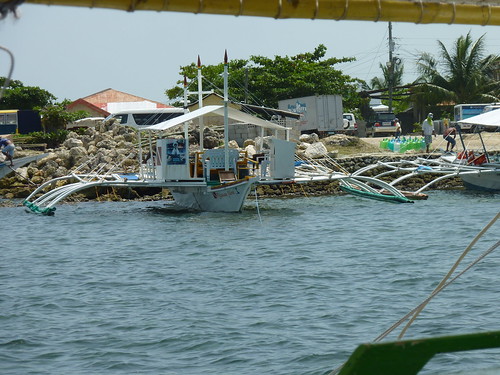
There was a thrilling moment when we were going head to head with what looked to be a tanker, who was cutting across our path. We were on a direct collision course, until the captain thought better of it and let them pass:


After trawling around with our bags for a good 25 minutes, we finally found a place to stay within our price range. Tip – don’t bother looking at places on the beach front. They start at around 1500 pesos, and only get more expensive. Inland, you can find cheaper accommodation and it’s still only 2 minutes’ walk from the beach. We settled on White Sand Beach Bungalows, which had the advantage of having its own little beach cove:
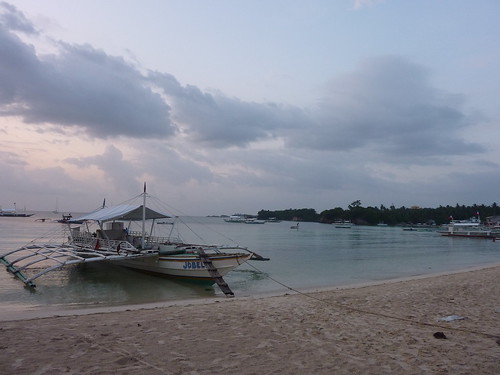
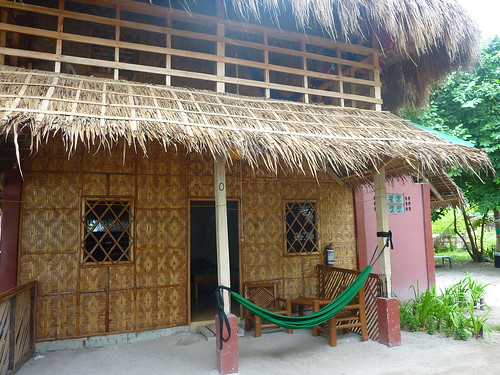

The majority of the locals have jobs around the tourism that comes to the island, be it restaurant or hospitality work, bringing over food and drink (our boat over was stocked with beer), diving, or working on boats:

We were looking for dive shops, and there are plenty on the island. Malapascua is a great jumping-off point for diving with thresher sharks, which is apparently quite rare in scuba circles. My friend Mark had recommended Thresher Shark Divers, so we went there first. The guy we spoke to (Russ, who looked eerily like Donald Pleasance) gave us the rundown of the various sites, prices and times, and whilst we had a look around the other shops to see if they were any better, TSD were the most competitively priced. Our diving was to start the next day, so the afternoon was free. We had some food at Ging-Ging’s Flower Garden, which is probably the best value eatery on the island and the food was excellent even if the service was incredibly slow. Since there was no wi-fi at the bungalows, we took the laptop up to a seaside bar and enjoyed some happy hour beers (San Miguel is the Philippines’ main brewery, so you can pick up a bottle for about 60p) whilst sorting out our email and blogs.
We left White Sands Beach Bungalows next morning and moved to an even better value place 5 minutes walk away: Purple Snapper. For 650 pesos, we got a basic hut, but it had a pool table, a table tennis table, free wi-fi in the bar and half-price breakfasts for guests. Oh, and a pool which we were more than happy to enjoy:

After moving our stuff in and getting lunch at Ging-Ging’s, we went to TSD for the first dive of the afternoon to Monad Shoal. Here, we were supposed to be able to see manta rays. This didn't work out so well: we managed to see the brief outline of one in the distance, which was impressively big but not the close-up experience we were hoping for. After getting back, we had a couple of hours breather before heading out for the night dive at Lighthouse. We saw 5 or 6 pairs of seahorses, plenty of nudibranches and a sea cucumber. Most importantly though, we got to see mandarinfish spawning at dusk. The below video gives an example (we didn't have a camera unfortunately) but they basically spend 10 minutes chasing each other before joining together and doing a strange little rising dance before the female releases eggs into the water.

After moving our stuff in and getting lunch at Ging-Ging’s, we went to TSD for the first dive of the afternoon to Monad Shoal. Here, we were supposed to be able to see manta rays. This didn't work out so well: we managed to see the brief outline of one in the distance, which was impressively big but not the close-up experience we were hoping for. After getting back, we had a couple of hours breather before heading out for the night dive at Lighthouse. We saw 5 or 6 pairs of seahorses, plenty of nudibranches and a sea cucumber. Most importantly though, we got to see mandarinfish spawning at dusk. The below video gives an example (we didn't have a camera unfortunately) but they basically spend 10 minutes chasing each other before joining together and doing a strange little rising dance before the female releases eggs into the water.
It was fascinating to watch, but annoyingly there were a couple of underwater photographers in the group. I am coming to really dislike scuba divers with cameras. Firstly, they don't have any notion of personal space and are quite happy to swim under, over or into you as they fiddle around with their kit. Secondly, they are incredibly selfish, and once something has been spotted that they deem worthy of taking a photograph of, they will sit right on top of it, preventing us mere mortals from getting close until they've taken at least eighty-five shots of the same damn thing (by this time, it's probably swum off or hidden). Thirdly, they pay no attention to their surroundings; on this particular dive one of the idiots came within about 15cm of touching a lionfish as he scrambled to zoom in on the mandarinfish. Lionfish are not things you want to touch, unless you want a bout of fever accompanied by vomiting and occasional death. To be honest, pretty much every underwater photographer we've been diving with (Sipadan aside), has been a selfish prat. I'm not planning on getting underwater housing for my camera, but if I did I would hope to have a little more respect for other divers.
The next day we had to be at the TSD dive shop for 5am as the thresher shark dive needed to be early to have the best chance of seeing them. And see them we did - around five of them. Wonderful creatures which move surprisingly quickly, even by fish standards; their tails are almost as long as the rest of their body and they can turn on a sixpence. We were sat at a cleaning station watching them go back and forth, and one of them came up pretty close - about 10 metres away. I guess it was curious about us. They aren't dangerous to humans, but they are hunted anyway for meat and as sport which is why they are now listed as being vulnerable to extinction. I'm glad we had the opportunity to see them.
We had two more dives that day. The first was to Dona Marilyn, a wreck of a ferry which sank in 1988 killing over 500 people. It was our first wreck dive, and was pretty impressive - we got to see a marbled ray sitting under the hull, as well as a number of puffer fish. It was quite a cold dive though; the more dives I do, the more I realise that I'm unlikely to ever dive in the UK. I find it cold enough in temperatures of around 26-27 degrees, so hitting English waters would probably freeze me solid.
The final dive was to Gato, which was a little island with a cave entrance:

We didn't dive through the underwater cave (no-one had hired torches and it was just a swim-through, nothing particularly exciting), but we did see some new creatures including a sea cucumber, a sea snake, spider crabs, some tiny prawns, and a Spanish dancer: a huge sea slug that ripples its way through the water. We also saw a whitetip reef shark at a cleaning station, whilst remoras clung to its body cleaning it. At least, until the bloody photographer came barging past and the shark swam off.
As TSD choose their dives the night before, the downside is their choices may be places that you've already dived. This was the case for us, so we didn't bother diving on our final full day and instead went for a wander around the island. We met some of the local wildlife, and were also adopted by an adorable puppy who followed us all the way back to our hut:

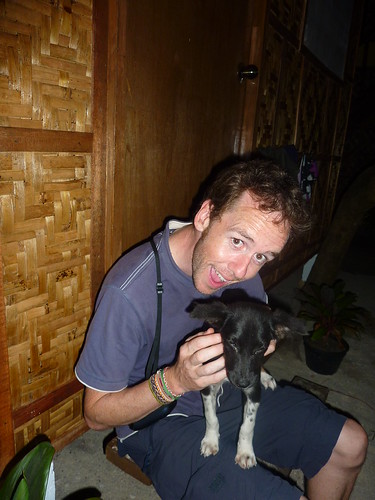
The next day we had to be at the TSD dive shop for 5am as the thresher shark dive needed to be early to have the best chance of seeing them. And see them we did - around five of them. Wonderful creatures which move surprisingly quickly, even by fish standards; their tails are almost as long as the rest of their body and they can turn on a sixpence. We were sat at a cleaning station watching them go back and forth, and one of them came up pretty close - about 10 metres away. I guess it was curious about us. They aren't dangerous to humans, but they are hunted anyway for meat and as sport which is why they are now listed as being vulnerable to extinction. I'm glad we had the opportunity to see them.
We had two more dives that day. The first was to Dona Marilyn, a wreck of a ferry which sank in 1988 killing over 500 people. It was our first wreck dive, and was pretty impressive - we got to see a marbled ray sitting under the hull, as well as a number of puffer fish. It was quite a cold dive though; the more dives I do, the more I realise that I'm unlikely to ever dive in the UK. I find it cold enough in temperatures of around 26-27 degrees, so hitting English waters would probably freeze me solid.
The final dive was to Gato, which was a little island with a cave entrance:

We didn't dive through the underwater cave (no-one had hired torches and it was just a swim-through, nothing particularly exciting), but we did see some new creatures including a sea cucumber, a sea snake, spider crabs, some tiny prawns, and a Spanish dancer: a huge sea slug that ripples its way through the water. We also saw a whitetip reef shark at a cleaning station, whilst remoras clung to its body cleaning it. At least, until the bloody photographer came barging past and the shark swam off.
As TSD choose their dives the night before, the downside is their choices may be places that you've already dived. This was the case for us, so we didn't bother diving on our final full day and instead went for a wander around the island. We met some of the local wildlife, and were also adopted by an adorable puppy who followed us all the way back to our hut:


Malapascua was a lovely retreat from the city madness we'd experienced, and as a taster of the Philippines it was ideal. I think if we returned we would definitely stick to the south and look at some of the other islands around (Palawan is definitely on the to-do list). We took a boat back to Maya the following morning (100 pesos each - the "correct" price), then caught an air-conditioned bus back to Cebu. We hadn't realised that air-con was available...and only for 30p more. Not a Celine Dion song to be heard.
We checked back into Palazzo Pensionne, as it had been ideal a week earlier, then took a stroll out for some food. An American guy called Brad we met on the way recommended a BBQ bar across the road called Popeye's Grill. We checked it out, played some pool, had some beers and enjoyed some BBQ food which was tasty but had minuscule portions. A walk up to the nearest mall followed for a look around, but nothing really caught our eye except for a rather tasty brownie and a McDonalds chocolate sundae. Well, you have to eat, and I wasn't really full after dinner.
The next day gave us the chance to explore Cebu a bit more. It's like Manila, except a lot more relaxed and much easier to wander around in. We walked from our lodgings down to the centre and took in a few sights, including the picturesque Fort San Pedro and the Basilica del Santa Nino.
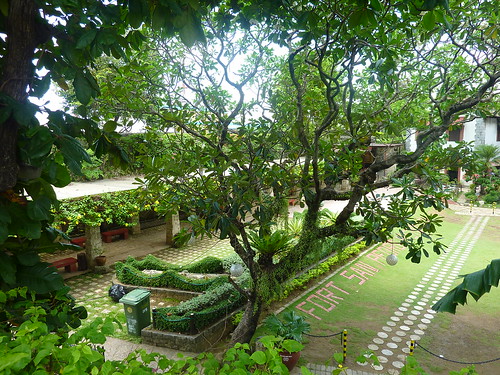
The Basilica was interesting. One of the ceiling murals apparently has a bloke being blasted in the head by an angel's laser:
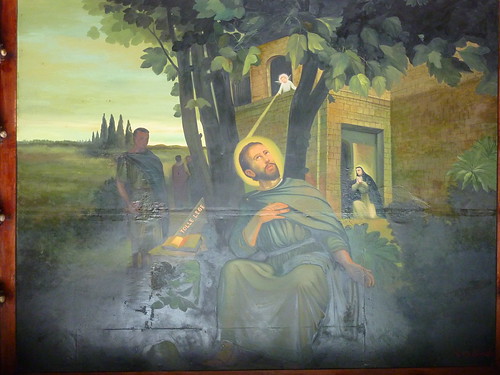
On top of this sci-fi mayhem, you also have "Magellan's Cross" in its own gazebo. This is the cross that Ferdinand Magellan (explorer, traveller, oppressor and religious nutcase) planted after converting the inhabitants of the island to Christianity. Well, it's supposedly the cross - all you can see is a "protective covering" which is said to house the original cross. Magellan met his end in a suitably amusing way: after hearing of a tribal chief who refused to convert to Christianity, he went with 49 armoured men to Mactan island to overpower the natives led by Lapu-Lapu to convert them by force. Unfortunately, there were over 1,000 defenders, and Magellan had seriously underestimated the strength of numbers. Subsequently, he was cut to pieces. Lapu-Lapu is beheld today as a national hero: the first to resist foreign rule.
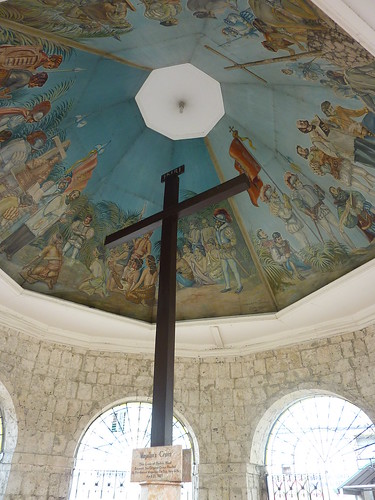
In between places of interest, I saw this sign on a lamppost and had to take a picture. I particularly like the use of the word "reward". I'd love to know how many people took John up on the offer.
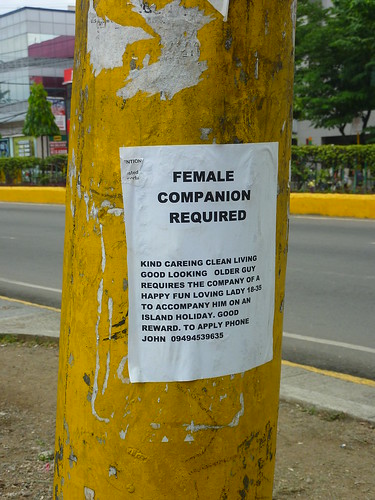
We were heading to the Sky Experience Adventure at the Crown Regency Hotel. My friend Jon had recommended it and it looked pretty interesting. It was a fair walk from the Basilica but we got to see quite a bit of Cebu centre so it made for an enjoyable stroll. The experience comes in a number of flavours. You can do rock climbing, a roller-coaster thing where you are tipped up over the edge and facing down 39 storeys, or you can take a zip line between two buildings á la Spiderman, but without the sticky web stuff. We opted for the last one as it seemed the most fun. This involved getting kitted up in orange jumpsuits which made me feel like a cross between a state penitentiary inmate, and MC Hammer.

The view was immense - you can see the roller-coaster track here:

We couldn't take cameras up, but you can see the zip-line we had to take across to the building opposite. It's one of the steep ones that end up at the covered area.
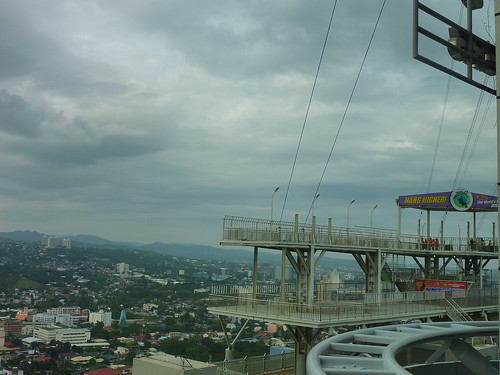
The ride was short - 8 seconds - but in that time you are floating over the city hundreds of feet up and being held up by a bit of cable. That was pretty fun. You then get re-attached, and have a longer ride back up to where you came from. After the Gibbon Experience in Laos, it didn't feel particularly extreme though. Maybe I've become a hardcore adrenaline junkie. I'm looking forward to checking out some bungee jumping in New Zealand, and maybe even a sky dive...
That was pretty much it for our time in Cebu. We had a flight booked in the evening that was to arrive in Singapore at about midnight. I wasn't sure what to expect from the next country. I'd heard it was clean and organised, and Hayley - who we met in Chiang Mai - loved it. After a 4 hour flight, a decent night's sleep was the only request I had ahead of our first full day there.

